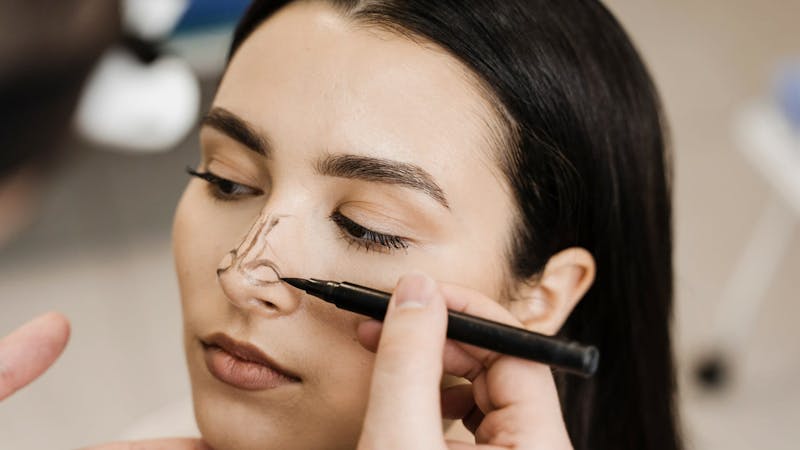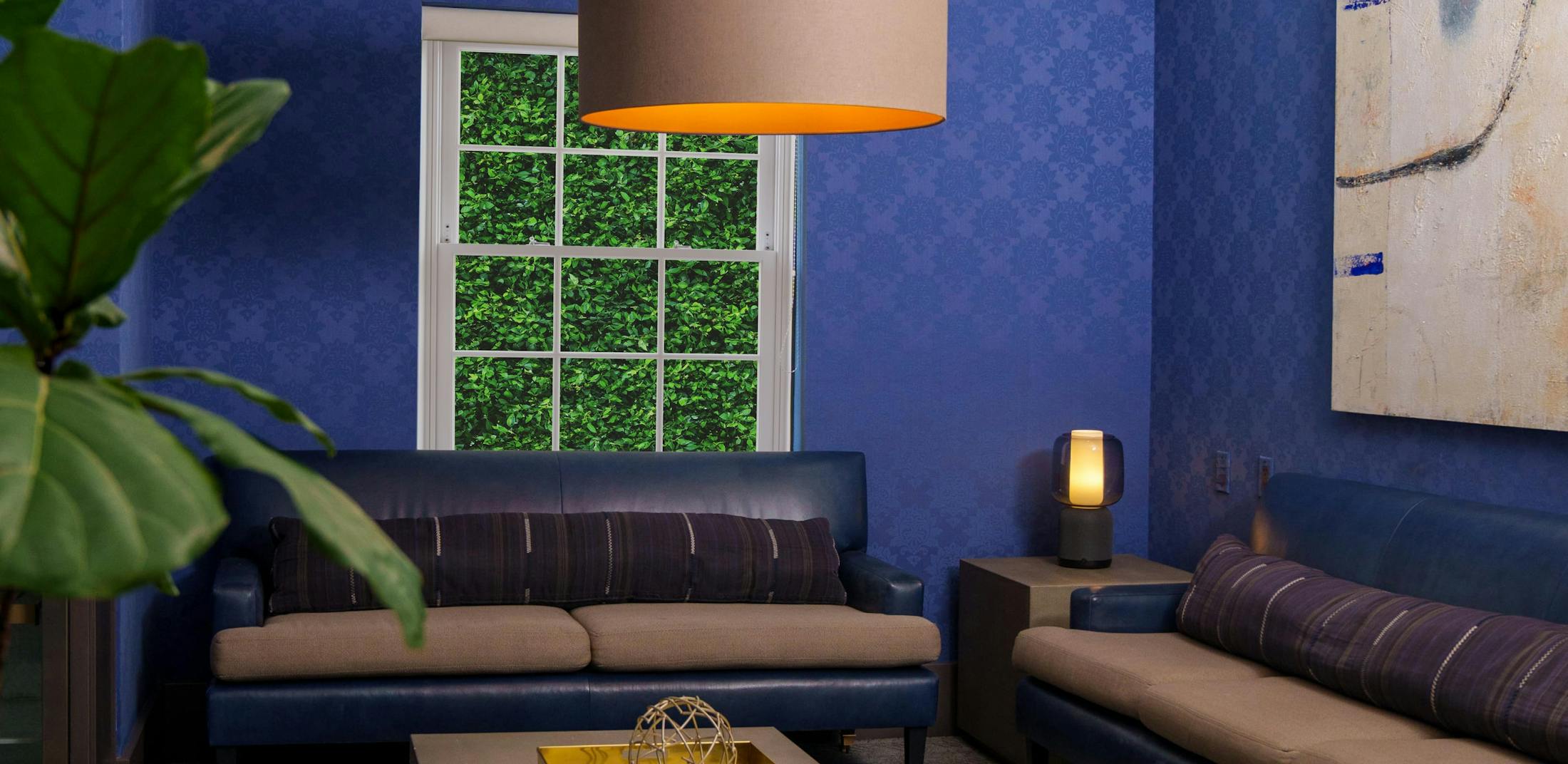
A revision rhinoplasty corrects a previous rhinoplasty and is a surgical procedure also commonly referred to as a secondary rhinoplasty. Whether you’re dissatisfied with the look of your nose, experiencing functional issues, or facing nasal asymmetry, this comprehensive blog will walk you through what a revision rhinoplasty procedure entails as well as the recovery process. After reading, you’ll feel much more at ease about going under the knife again.
Understanding the Need for Revision Rhinoplasty
It’s understandable that if your first rhinoplasty didn’t give you the result you were ultimately hoping for, you’d be apprehensive about corrective surgery. And while it is entirely normal to feel this way and be nervous about the thought of more surgery, you should rest assured that it’s possible to achieve a positive outcome.
A skilled surgeon who is experienced in dealing with scar tissue and has carefully considered your unique case is typically successful when performing revision rhinoplasty.
Common Reasons For a Revision Rhinoplasty
- Aesthetic outcome of the initial surgery: Sometimes, the results of the first rhinoplasty may not meet your expectations, leaving you dissatisfied with the overall appearance of your nose.
- Functional problems: Structural problems, such as a nasal valve that is compromised or blocked, may hinder proper breathing, negatively impacting your daily life.
- Nasal asymmetry or deformities: With time, nasal asymmetry or undesired changes may become apparent, requiring correction.
- Unresolved issues with the initial surgery: Certain concerns, such as an upturned or drooping tip, may continue to persist.
- Overcorrection or under correction: In some cases, too much or too little tissue may have been removed during the initial surgery, necessitating revision.
Choosing the Right Surgeon
Selecting a skilled surgeon with a lot of experience in both primary and revision rhinoplasty is an important step that shouldn’t be overlooked. When researching a surgeon, always consider the following:
- Board certification: Some plastic surgeons are dually certified by the American Board of Facial Plastic and Reconstructive Surgery (ABFPRS) and the American Board of Otolaryngology—Head and Neck Surgery (ABO). This means they are that much more qualified to perform a revision rhinoplasty.
- Expertise in revision rhinoplasty: Ensure that the surgeon specializes in revision surgery and has a proven track record of successful outcomes. This is necessary because scar tissue is commonly present after primary surgery and can be challenging to work with.
- Consultation: Schedule a thorough consultation to discuss your concerns. A confident and qualified surgeon will take the time to answer all of your questions and help you set realistic expectations.
- Before and after photos: Review the surgeon’s before and after photos to assess their skill and determine if their aesthetic matches your desired outcome.
Preparing for Surgery
Before your revision rhinoplasty, it’s important to discuss the following points with your surgeon:
- Your concerns: Clearly communicate your specific concerns and goals for the revision surgery.
- Overall health: Your nasal anatomy and medical background should be evaluated to determine the best revision approach for your case.
- Treatment plan: A comprehensive treatment plan should be tailored to your needs with explanations of the techniques that will be used to achieve your desired outcome.
- Pre-operative instructions: Pre-operative instructions should be discussed. These may include avoiding certain medications, supplements, and lifestyle changes.
The Revision Rhinoplasty Procedure
Your revision rhinoplasty procedure will depend on the specific issues being addressed. Generally, on surgery day, you will experience the following:
- Anesthesia: Revision rhinoplasty is typically performed under general anesthesia, ensuring you are comfortable and pain-free during the surgery.
- Incisions: Your surgeon will make only the most appropriate incisions for you, given your specific situation. The incisions will either be inside the nose or outside the nose, depending on how complex your case is.
- Reshaping the nose: Your surgeon will address the concerns discussed during the consultation, which may involve techniques such as cartilage grafting, osteotomies (bone cuts), or reshaping of the nasal structures.
- Nasal symmetry: Achieving nasal symmetry is a crucial aspect of revision rhinoplasty, and your surgeon will work diligently to ensure balance and harmony between the nasal structures.
- Closure: Once the necessary adjustments are made, the incisions are carefully closed using sutures or other techniques, promoting optimal healing and minimal scarring.
The Recovery Process
The recovery process after revision rhinoplasty is similar to that of primary rhinoplasty, and it requires patience and adherence to post-operative instructions. Here are some key points to keep in mind:
- Swelling and bruising: Swelling and bruising around the nose and eyes are common and typically peak within the first week. Applying cold compresses and keeping your head elevated can usually help reduce swelling.
- Pain management: Your surgeon may prescribe pain medications to alleviate any discomfort. Always follow the prescribed dosage and consult your surgeon if you have any concerns about pain management.
- Nasal congestion and breathing: It is normal to experience nasal congestion and breathing difficulties in the initial weeks following surgery. This is a result of swelling and the healing process. Nasal saline sprays and humidifiers can provide relief.
- Follow post-operative instructions: Your surgeon will provide detailed post-operative instructions, including how to care for the surgical site, when to change dressings, and how to clean your nose. Follow these instructions diligently to promote proper healing.
- Rest and physical activities: Plan to give yourself adequate time to rest during the recovery period. Avoid strenuous activities, contact sports, and heavy lifting for several weeks. Follow your surgeon’s guidelines regarding when to reintroduce an exercise plan.
- Follow-up appointments: Attend all scheduled follow-up appointments with your surgeon. These visits allow for proper monitoring of your progress, time to address any concerns, and a scheduled time to remove sutures if need be.
Results and Expectations
As is the case with any reconstructive surgery, it’s helpful to have realistic expectations when it comes to your revision rhinoplasty results. Remember that the final outcome may not be immediately apparent due to swelling and tissue healing. It may also take several months for your new nose to settle and take shape.
A successful revision rhinoplasty requires a communicative partnership between the patient and surgeon, and the more open you are about the pain points of your primary surgery, the more likely you’ll achieve the desired results this time around.
The Risks and Complications
Revision rhinoplasty carries risks. These can include infection, bleeding, adverse reactions to anesthesia, scarring, and persistent asymmetry. However, choosing a board-certified, experienced surgeon, following pre- and post-operative instructions diligently, and maintaining open communication with your surgeon can significantly help minimize these risks.
Key Takeaways
Revision rhinoplasty is a surgical procedure that offers the opportunity to address and correct concerns arising from previous rhinoplasty surgery. Thinking about having another surgery can certainly be an emotionally charged process, so it’s important to discuss your concerns openly with your surgeon.
A competent surgeon will provide reassurance, explain the possibilities, and help manage your expectations. When in the hands of a skilled and empathetic surgeon, you can embark on your revision journey with confidence.

